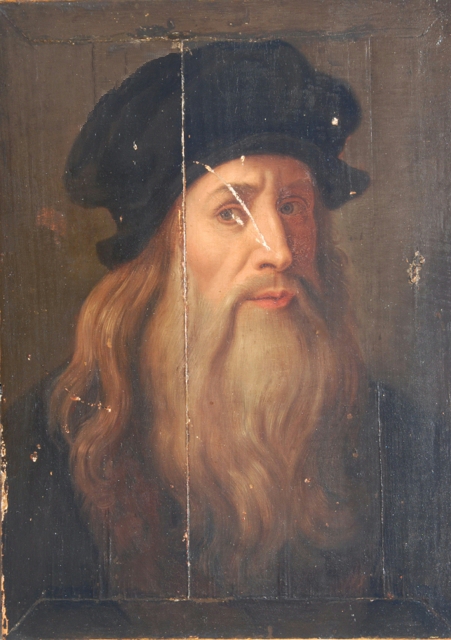This article is written by Ramanuj Mukherjee, CEO, LawSikho.
What can we lawyers learn from the Renaissance?
What is common between Dante, Leonardo da Vinci, Gallileo, Botticelli, Michelangelo, Machiavelli, Ghiberti, Brunelleschi? Well, they are all masters of the Renaissance and excelled in different subjects ranging from literature, politics, science, painting, and sculpture. The other common thing is that they all came from a tiny but prosperous city called Florence, the epicenter of the Renaissance in medieval Italy.
How can so much talent and genius be concentrated in a city of 60,000 people? Did the independently governed city-state know something that mankind has forgotten?
As a founder of a transformative legal education company, the bigger question for me is: can we learn something about how this became possible so we can apply it in our work, and promote creativity, mastery, and genius in the legal industry? What would it take to recreate the Renaissance in the Indian legal industry?
I have been studying Leonardo da Vinci for the last few days. His life and works truly inspire until date. It makes me wonder, how is it to be a true master at your work? What would it take?
When the king of France successfully invaded Milan, as a part of the truce he took Leonardo da Vinci with him as a kind of trophy and put him up in a palace next to the Royal Chateau. Many years later, Leonardo died with his head in arms of King Francis I.
For half a century, Leonardo da Vinci was famous as the most famous artist ever. In the last 100 years, his diaries and scientific work were discovered, and since then he has been revered as a scientist!
Let’s just take a look at the range of his training and activities.
Leonardo did not just study painting. He studied about pigments and adhesives. He studied biology, physiology, and aerodynamics. He had no formal academic training, but he went deep into his study of science, philosophy, civil engineering, geology, and hydrodynamics.
He did not publish his findings, but these were discovered much later. He designed many machines, most of which could not have been built because engineering was not advanced enough at the time.
Leonardo began his career as a teenager in the studios of Verrocchio, the leading painter, and sculptor in Florence. He essentially worked and grew up with other geniuses like Boticelli, Perugino and Ghirlandaio, all of whom stood out as famous painters of the time.
He not only learned the normal artistic skills of drawing, painting, sculpting, modelling, and sculpture, but also drafting, chemistry, metallurgy, metalworking, plaster casting, leatherworking, mechanics, and wood-work.
The most striking thing about Da Vinci was his unorthodox methods, and willingness to question the fundamentals of art as known at the time. He experimented with almost every aspect of his work, from composition to color and brushstrokes.
He lived and worked in different cities, learning different styles, traditions, and techniques from different places. He lived in Florence, Bologna, Milan, Rome, Venice, and finally in France.
He did not always work as an artist. He frequently accepted employment as a cartographer, architect and military engineer. He built defense systems to protect Venice against a naval attack.
However, did his research and study into so many diverse disciplines contribute to his intellect and his abilities as an artist? Undoubtedly.
He is the primary example of a Renaissance Man.
Most of us struggle to learn even one discipline well, Leonardo da Vinci constantly learned and explored new areas and enriched himself year after year.
20 years after the death of Leonardo da Vinci, King Francis I of France, who was a friend to Leonardo at the end of his life, said about him: “There had never been another man born in the world who knew as much as Leonardo, not so much about painting, sculpture, and architecture, as that he was a very great philosopher.”
The spirit of the Renaissance was to reach out to the universal spirit of beauty, to understand what creates beauty itself, what underlies aesthetics, and how as human beings we can understand the universe.
We had a renaissance man in Nani Palkhivala in the Indian legal fraternity. Not only was he a great lawyer before the court, but he could venture into any area of law without a pause. Not only law but his knowledge of economics was also unparallel. During the budget session, he used to stand and deliver a lecture on the budget to an audience of thousands of industrialists, journalists, and lawyers. He was a prolific author. His books reflect the depth of his philosophical thinking as well.
We need to rekindle the spirit of the Renaissance to succeed as a lawyer and achieve our true potential. A lawyer must draw on not merely legal knowledge, but expertise in marketing, publishing, management, UX design, technology and a lot more.
Legal fraternity truly offers a brilliant opportunity where your knowledge of any kind, from economics to science, history to anthropology, nothing is likely to be wasted. And perhaps you could be a Leonardo of Law if you did not stop to ponder about how a particular subject will help you in your career before you threw yourself neck deep into learning.
The future beckons.
When Leonardo da Vinci was in his deathbed, he wept. He cried in agony and said that he had offended against God and men by failing to practice his art as he should have done.
I hope when we meet our end, we will smile knowing that we have done justice to our work, and have exhausted whatever potential we had to give in this world.
Reading the story of Leonardo da Vinci and the Renaissance makes us realize how little we are dealing with, and how far we have to go.
Here are some courses coming up in which you can enroll right now and start studying:
Diploma
Diploma in Companies Act, Corporate Governance and SEBI Regulations
Executive Certificate Courses
Certificate Course in Real Estate Laws
Certificate Course in Arbitration: Strategy, Procedure and Drafting













